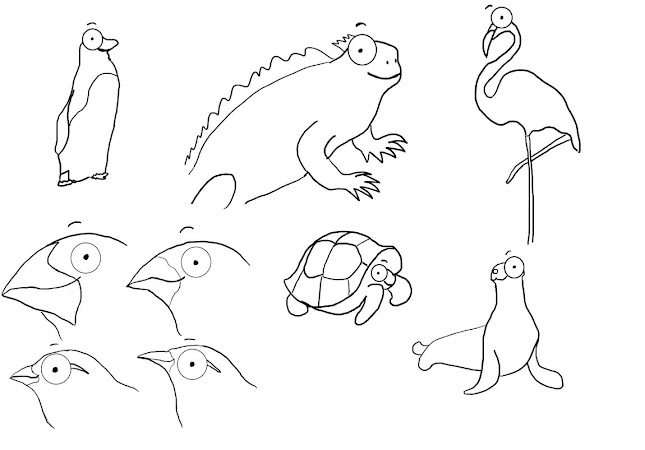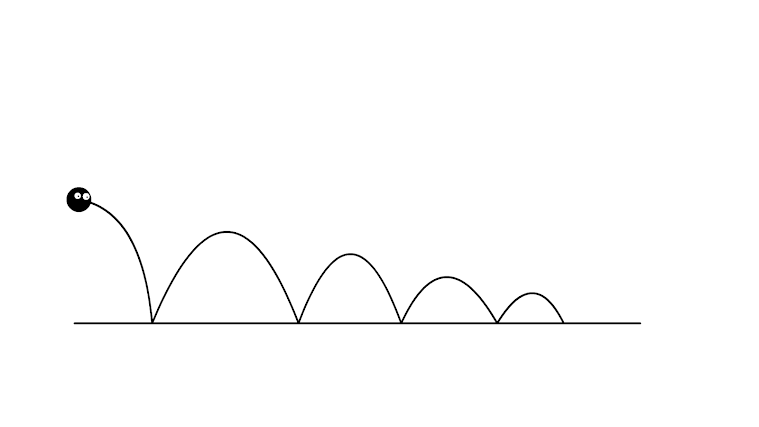Fantastic Voyage: Elevator Pitch
Topic: Evolution
What Is An Audience?
To begin, I want to firstly understand what an audience is. An audience is a collected group of individuals who consume any type of media. They are the people the product appeals to and are the ones who will purchase it. If there was no audience, companies would have no one to sell to and so there would be no profit. Companies must learn to adapt with the times, meaning they must always put the audience's needs first in order to have a successful product. An example of this is news papers. With the rise of technology, news paper companies have had to find a way to digitize their paper in order to keep up with their audiences needs. You no loner have to travel all the way to a shop and pay for a physical newspaper and can instead access it form any device through the internet. To further capitalize upon this many if not all news companies have their own, easy to use app, which has been further developed to send personalised articles to the user. The constant engagement with the audience ensures sales and views towards the company, making them more successful.
Mass And Niche Audience
There are also different types of audiences a product will appeal to, mass and niche. Mass audiences are products which have a great demand due to their popularity. An example of this is the PlayStation 5. The PlayStation 5 had to be preordered months before its release to ensure the consumer would be guaranteed a unit. This is due to Sony realizing the popularity of their console and so making it available to preorder early to get an understanding of how many they would have to make.
A niche audience however is products targeted towards people interested in something very particular which many not necessarily be popular among many. The lack of demand normally means that the product is more expensive or that there are less of the products on the market. An example of a niche product is train simulator. This as quite a specific audience but those who enjoy it are very passionate. The company has managed to make a lot of money from this product by creating many DLC (downloadable content) for the consumer to buy additionally.
Below I have listed the main points which define the game to a 7+ audience.
- Bright colours
- Fun characters which are not scary
- Quick games to maintain short attention spans
- Simple puzzles
- Easy to learn games and objectives
- No gore. Characters instead explode into ink
- Very visually active characters
- whacky levels
- Big expressive faces
- Slapstick Comedy
- Bright colours
- Easy Controls
- No Blood, Gore or Violence
- Short, fun levels
- Funny noises
- Game is on a rail, meaning the game will playout without any additional inputs needed
- Massive open world which the player is free to explore at their own pace
- Puzzles which can be challenging at times but are doable by the average person
- Combat which is easy to learn and hard to master
- Colourful cartoony graphics
- Same Zelda formula with a modern day twist
- Light Survival elements
- Atmospheric music
- Realistic
- Dark and gritty
- Use of strong language
- Use of alcohol and drugs
- massive open world
- Extremely detailed environment, characters and story
- 60+ hour storyline
- Cinematic story
- Use of guns
- Murder
- Complicated controls
- Survival elements
- Historically accurate
- Atmospheric music
The Year 6 (KS2) Presentation - The Life Of Charles Darwin
The presentation starts by explaining who Darwin was, a bit about his early life and how he became the naturalist aboard the ship HMS Beagle. It does this through mostly chunks of text. The text is informative, with facts to back up the information. There is a single picture in the centre which breaks up the text and offers some context visually about what the text is talking about.
The following slide describes the Beagles voyage. I like this slide particularly as it has enough text to be informative yet not too much to become overwhelming. It has a large image surrounding the text which depicts The Beagle battling the harsh conditions. I feel like the use of the large image is not only more interesting to look at, but also more memorable as you are getting a visual interpretation for your mind to remember. This helps me as I am a very visual learner.
The slide reverts back to its two paragraph and picture format as it describes Darwin's findings and then the PowerPoint ends.
I feel like the PowerPoint successfully described "The Life of Charles Darwin" in the way a year 6 (KS2) student would understand.
I like the cartoon forest image which is present in every slide and acts as the border. Its visually interesting and adds an unique look to the presentation. I also have to consider that the PowerPoint has animated text in its digital form (as I am viewing it on paper). This means paragraphs will whizz in from offscreen so the viewer will not be met with an initial wall of text. This adds structure and flow to the presentation and allows the presenter to go at their own pace. It also grabs the attention of those watch as they see something quickly enter the screen.
I feel like the images did their job well enough to understand the information, however I would personally find images which are more interesting to look at. This will help keep the attention of those viewing.
The Year 1 (KS1) Presentation - Evolution And Adaptation
The difference in text immediately stuck out to me when viewing this presentation.
The first slide is explaining what evolution and adaptation both are. It does this by having the person in control click on the boxes in order to discover the answer. This will then reveal a very short definition with easy to read text. By making the presentation interactive, it keeps the attention of the viewer by involving them. This is needed towards this audience aged 5-7, too keep them engaged.
The next slide introduces Charles Darwin with a short description of who he was and what he did. Its important just to get the key information out with less distracting information to ensure the viewer understands what they need to understand. Because of this, the presentation does not need to explain Darwin's early life, his job, travels, discoveries and publication of his book (all information found in the year 6 KS2 presentation)
The next slide shows how evolution works and then the remaining slides provide information giving examples.
The main difference this time is that the PowerPoint is less focused on certain areas and is more of an overview of the topic as a whole. There is enough information to understand evolution, but not too much to overwhelm the viewer.
I really like how each slide is structured. At the top there is a bold title which reminds the viewer what is happening on the slide. There's not too much writing and the images are large and cartoony. Like before there is also a bright picture as the background and border. I like how the images are utilized more in this PowerPoint. This was however easier for them to do for this PowerPoint as there is less text which leaves more room for images.
Overall I feel like I have benefitted by analysing both KS1 and KS2 work. I think I prefer the idea of Ks1 as it is a bit more fun and brief, which will allow me to focus on the animation. I can make the animation more visually interesting if my audience requires less information and a way of absorbing it.
The student must:
Develop awareness of the past, common words and phrases
Know where people and events fit in a chronological framework
Identify similarities and differences between the past and present
Use a wide range of historical vocabulary
Ask/answer questions
Understand a few ways in which we uncover the past
The goal is to introduce the topic to be further developed up at higher levels later on (KS2/KS3)
Taught about:
Major changes within living memory
Significant national/global events beyond living memory, example: Great Fire Of London
Lives of significant individuals
Significant historical events
BBC Bitesize
Animatic












Comments
Post a Comment